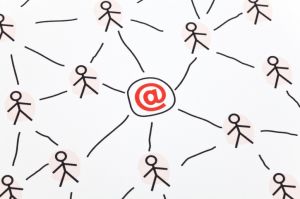Marketing insights question: What’s your legacy sentence?
December 28, 2011

What’s your legacy sentence?
Over the next few weeks, as we head towards 2012, I want to get you thinking about your business in a new/fresh way. I’m going to ask a single question in each post — but I’m warning you, these aren’t slam dunk questions.
I’m hopeful that as you ponder my question — it will give you some ideas for making 2012 a break out year for your organization. If nothing else — this exercise should fine tune some of your marketing efforts.
What’s your legacy sentence? If a customer/potential buyer was going to describe your business in a single statement, what would it be? Imagine yourself at a networking event and someone says…what do you do?
You can either say, “I’m a financial planner” or you could say, “I help women in transition get on firm financial footing.”
The first option tells me your profession. The second tells me 1) who you serve, 2) how you add value, 3) what to ask you next (as opposed to just saying, “oh, that’s nice.”)
Which one would you want people to repeat as they introduce you to someone new?
Whether you’re talking about your personal brand/reputation or your company’s reputation — the rule is the same. You need a single sentence. Mary Stier wrote a blog post about this and she quoted Dan Pink‘s book Drive, saying:
“In 1962, Clare Boothe Luce, one of the first women to serve in the U.S. Congress, offered some advice to President John F. Kennedy. ‘A great man,’ she told him, ‘is a sentence.’
Abraham Lincoln’s sentence was: “He preserved the union and freed slaves.” Franklin Roosevelt’s was ”He lifted us out of the Great Depression and helped us win a world war.”
Luce was worried that Kennedy’s attention had been splintered and he wouldn’t be able to solidify the nation’s definition of his presidency.
How about you? Are you marketing messages laser pointed to a single sentence or are they scattered all over your features, benefits and copy hyperbole?
What single sentence can you use in person, on your marketing materials, in sales proposals, and in all of your sign offs and signatures?
Stock photo courtesy of BigStockPhoto.com
More

















